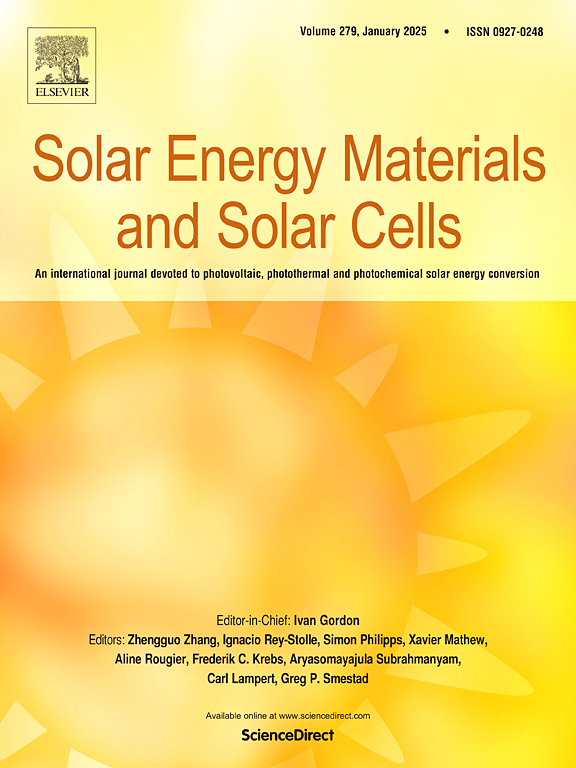SolarMoves中着色模型的验证
IF 6.3
2区 材料科学
Q2 ENERGY & FUELS
引用次数: 0
摘要
为了了解汽车集成光伏对现在和未来电网需求的影响,SolarMoves项目结合了详细的建模和测量,对现在和2030年欧洲电动汽车车队和电网基础设施需求进行了预测。该项目的第一阶段包括广泛的建模工作。在本文中,我们采用该项目第二阶段的车辆辐照度测量结果来检验该项目第一部分中使用的季节性遮阳模型的有效性。测量结果表明,遮光损失可以在5%到20%之间。遮阳会对PV产量产生重大影响,特别是当车辆穿过不同地形时,包括很少遮阳的开放空间到有很多遮阳的非常密集的区域。以准确的方式考虑这一点是确定可能的PV产量的一个非常重要的部分。本文章由计算机程序翻译,如有差异,请以英文原文为准。
Validation of shading model in SolarMoves
To understand the impact that vehicle integrated PV can have on the electricity grid requirements now and in the future the SolarMoves project is using a combination of detailed modelling and measurements to arrive at predictions for the European EV fleet and grid infrastructure requirements now and in 2030. The first phase of the project consisted of extensive modelling [1]. In this paper we take vehicle irradiance measurement results from phase two of the project to examine the validity of the seasonal shading model used in part one of the project. Measurement results indicate that shading losses can be somewhere between 5 and 20 %. Shading can have a significant impact on PV yield, especially on VIPV where the vehicle is moving through different terrains, including open spaces with little shading to very densely built up areas with a lot of shading. Taking account of this in an accurate way is a very important part of determining the possible PV yield.
求助全文
通过发布文献求助,成功后即可免费获取论文全文。
去求助
来源期刊

Solar Energy Materials and Solar Cells
工程技术-材料科学:综合
CiteScore
12.60
自引率
11.60%
发文量
513
审稿时长
47 days
期刊介绍:
Solar Energy Materials & Solar Cells is intended as a vehicle for the dissemination of research results on materials science and technology related to photovoltaic, photothermal and photoelectrochemical solar energy conversion. Materials science is taken in the broadest possible sense and encompasses physics, chemistry, optics, materials fabrication and analysis for all types of materials.
 求助内容:
求助内容: 应助结果提醒方式:
应助结果提醒方式:


